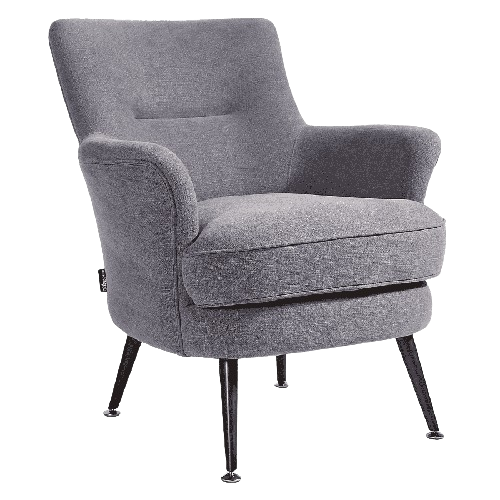Introduction
In today’s digital marketplace, a well-designed website is essential for furniture brands looking to increase their reach, improve user experience, and drive sales. A website serves as the virtual storefront for an online furniture business, influencing customer perception and purchasing decisions. In addition to aesthetics, factors like UX/UI design, website speed, mobile-friendliness, and SEO play a crucial role in a brand’s success. A well-structured digital presence not only attracts customers but also establishes long-term credibility.
The Role of UX/UI in Furniture E-commerce
Easy Navigation: How Structured Menus Improve Conversions
A website’s navigation structure directly impacts how easily customers can find products. A clear and intuitive menu, proper categorization, and breadcrumb navigation help enhance user experience and boost conversion rates. Studies show that well-structured menus can increase conversions by up to 30% by making it easier for customers to find what they need.
Mobile-Friendly Design: Importance of Responsive Layouts
With mobile-first indexing by Google, furniture brands must ensure their website is optimized for mobile users. Responsive design allows seamless browsing across devices, improving accessibility and engagement. Research indicates that 73% of online shoppers prefer mobile-friendly websites, making mobile optimization a necessity for growth.
High-Quality Visuals: The Power of 3D Models & AR
Furniture shopping relies heavily on visuals. High-resolution images, interactive 3D models, and AR-powered previews enhance customer confidence and reduce return rates. Brands leveraging AR technology have seen a 40% increase in customer engagement, as it allows buyers to visualize furniture in their space before purchasing.
Website Speed & Performance: A Key to Success
Page Load Speed & Impact on Bounce Rates
A slow-loading website can lead to higher bounce rates and lost sales. Studies indicate that a one-second delay in page load time can result in a 7% drop in conversions. Ensuring fast page speed enhances user experience and positively impacts SEO rankings.
Optimizing Images and Code for Faster Performance
Using compressed images, lazy loading, and minified CSS/JavaScript files enhances performance. Implementing a content delivery network (CDN) can further speed up content delivery, reducing latency and improving load times by up to 50%.
Google Core Web Vitals & How They Affect Ranking
Google’s Core Web Vitals focus on user experience metrics such as Largest Contentful Paint (LCP), First Input Delay (FID), and Cumulative Layout Shift (CLS). Websites that perform well in these areas tend to rank higher in search results and retain more visitors.
SEO for Furniture Websites: Attracting Organic Traffic
Keyword Optimization & Semantic Search
Using relevant long-tail keywords, related entities, and semantic search principles ensures better content ranking and discoverability. Incorporating structured content helps search engines understand website relevance, improving visibility for target queries.
Local SEO Strategies for Furniture Showrooms
Optimizing for local search with Google My Business, location-based keywords, and citation building helps drive foot traffic to physical stores. Local searches with phrases like “furniture store near me” have increased by over 200% in recent years, making localized optimization critical for success.
Schema Markup for Product Visibility
Implementing structured data like Product Schema and FAQ Schema enhances search engine understanding, increasing rich snippet visibility. Websites using structured data have a 30% higher click-through rate than those that don’t.
Conversion Rate Optimization (CRO) for Furniture Stores
Best CTA Placements for Increasing Sales
Strategic call-to-action placements on product pages, checkout pages, and homepage banners drive conversions. Properly placed CTAs can increase conversion rates by up to 80%.
A/B Testing Layouts for Better Engagement
Testing different layouts, colors, and copy variations helps determine what works best for engaging visitors. Studies show that A/B testing can boost conversion rates by 20% or more.
Trust-Building Elements (Reviews, Security Badges, Payment Options)
Displaying customer reviews, secure checkout badges, and multiple payment options builds credibility and boosts sales. Over 70% of online shoppers look for security badges before completing a purchase.
The Future of Furniture Website Design
AI-Powered Personalization
AI-driven recommendations and personalized shopping experiences can increase user engagement and retention. Brands using AI personalization see a 25% boost in sales, as tailored experiences cater to individual preferences.
Augmented Reality & Virtual Showrooms
AR and VR integrations allow customers to visualize furniture in their space before purchasing, enhancing decision-making. Over 60% of shoppers prefer retailers that offer AR capabilities.
Voice Search & Its Impact on Shopping Behavior
Optimizing for voice search ensures brands remain competitive as voice assistants gain popularity in online shopping. Voice shopping is projected to be a $40 billion industry by 2025, making it a crucial aspect of future SEO strategies.
Conclusion
A well-designed website is the backbone of a successful furniture brand. By focusing on UX/UI, speed, SEO, and CRO, businesses can improve their online presence and drive more sales. Implementing advanced web technologies and strategic optimizations ensures long-term success in the competitive furniture market. Additionally, partnering with an experienced SEO firm can further enhance search visibility and drive consistent organic traffic.

